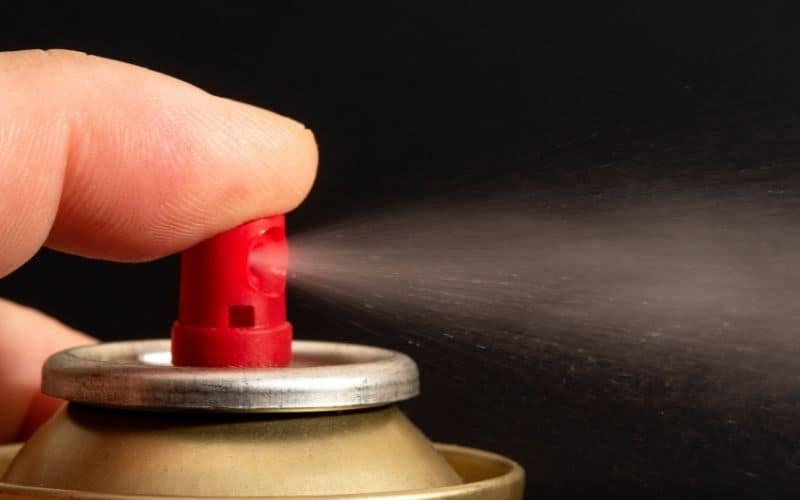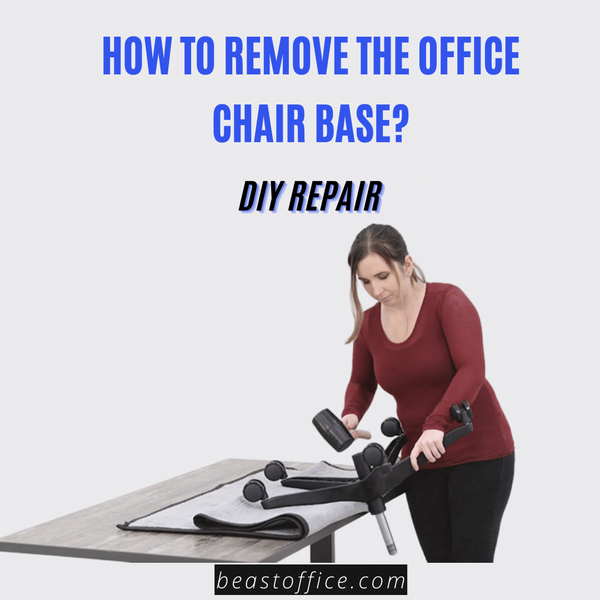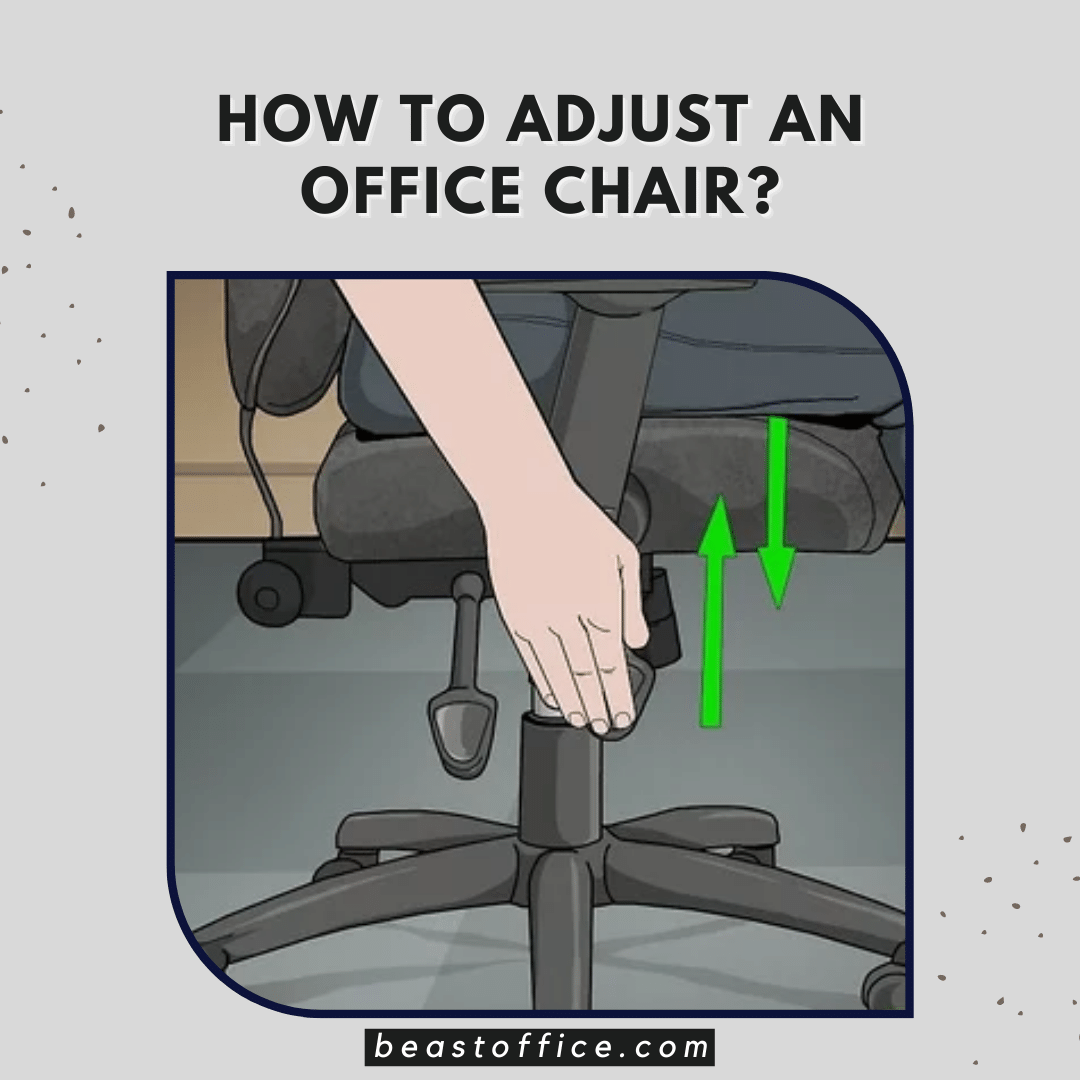Luckily for you, this article will cover some quick and easy ways to fix squeaky office chairs. These fixes are cheap and efficient and take almost no time to do.
Before you start looking for solutions to a squeaky office chair, you should ensure that the noise comes from your chair and not from another source. If your chair squeaks when it is moved in one direction only, it may be that the wheels are loose or need tightening. If the squeak occurs when you lean back or sit on the edge of your seat, something may break inside your seat base.
Things You May Require For Solution
Things you will require to fix squeaky office chair:
Spray lubricant

Spray silicone lubricant on the squeaky area of the chair. Use this spray lube generously to glide smoothly over the surface.
Rubber band

Tie a rubber band around the leg of the chair where it is squeaking. The rubber band will provide enough friction to stop the leg from moving. Please do not use too much force while tying up the rubber band, as it might break off due to excess pressure.
Ways To Fix
There are ways to fix a squeaky office chair.
1. Check for loose screws
2. Tighten all bolts
3. Readjust the wheels
4. Oil with WD-40
Detailed Solutions To Squeaky Office
If you're looking for a solution to a squeaky office chair, there are several things that you can do. You can take a look at the following tips:
- Use WD-40 to lubricate the moving parts of your chair. The WD-40 will help keep the parts moving smoothly and prevent squeaking.
- Use graphite powder on ball bearings to reduce friction and noise. This is a very effective way to eliminate squeaks in office chair wheels and glides.
- Apply silicone lubricant on squeaky parts of your office chair to make it quiet again.
- Use a leather conditioner on leather office chairs to make them soundless again!
Common Causes And Fixtures
The most common causes of squeaking are:
Poor-Quality Wheels
The chair wheels will make a lot of noise if they are not of high quality and have loose bearings. This is because poor-quality wheels tend to be made with low-precision steel, which does not withstand much pressure before breaking down or bending. To fix this, you need to change the wheels for better ones.
Seat Cushion
Excess movement in the seat cushion will make noise as it rubs against the back frame when you move around in your chair. You can fix this by tightening up the screws that hold your seat together or by adding padding between them to reduce friction between them.
Arms
They can make noise if your arms are loose and they're hitting each other when you move. Tighten up any loose screws on the armrests and if they still squeak after that, try lubricating them with WD-40 or silicone spray.
Backrest
Squeaky backs may have worn-out glides — small pieces of plastic that fit into grooves on the bottom of the chair's backrest and provide an easy way for it to roll smoothly across a floor without scratching it up in the process (if your office isn't carpeted).
Glides typically come in sets of two or four; if yours need replacing, replace all of them at once, so your chair rolls smoothly again.
Wheels And Casters
A third common source of squeaky office chairs is found in their wheels and casters themselves. If they're loose or not properly lubricated, they'll make noise as they roll around on hard surfaces such as tile floors or carpeting.
Check The Joints
If you are hearing a squeak from your office chair, then there is a good chance that something is wrong with one of its joints. To check this, move around in different directions and listen for any sounds coming from one particular area of your chair's frame or base.
If you find one particularly loud, try moving around again. Still, in a different direction – sometimes, this will help loosen up any friction that had built up between two parts that were rubbing together when you first detected the squeakiness.
Loose Or Damaged Parts
If this doesn't help, check if any parts of your chair are loose or damaged. If they are, you may need to replace them with new parts.
Other Reasons
Squeaks While Leaning Back
If your office chair squeaks when you lean back, this is usually caused by friction between two parts of your chair (usually where they meet).
The first thing you should do when dealing with this problem is to ensure that all of the screws are snugly tightened down and free of any debris that might be causing friction between them. If this doesn't help, try lubricating them with WD-40 or another type of lubricant for metal parts (make sure not to use oil). If this doesn't work, you may need to replace these broken pieces entirely – again, not something that most people will have on hand.
Squeaks While It Rolls
If your office chair squeaks when it rolls, it is usually caused by friction between two parts of your chair (usually where they meet). The first thing you should do when dealing with this problem is to ensure that all of the screws are snugly tightened down and free of any debris that might be causing friction between them.
If this doesn't help, try lubricating them with WD-40 or another type of lubricant for metal parts (make sure not to use oil). If this doesn't work either, then you may need to replace these broken pieces entirely – again with a little bit of WD-40.
FAQs
Q. Which are the best lubricants for squeaking office chairs?
Here's a list of the best lubricants to avoid squeak sound from your office chair:
- Silicone spray
- Light machine oil
- WD-40
Q. What is the knob under my office chair?
The knob under your office chair is used to adjust your seat height. To raise or lower the height, turn the knob clockwise or counter-clockwise until you reach your desired position.
Q. How do I use my tilt lock?
Simply pull up the lever and release it when you're ready for your chair to recline again or when you need to get up.
Related Posts
How To Adjust An Office Chair?








